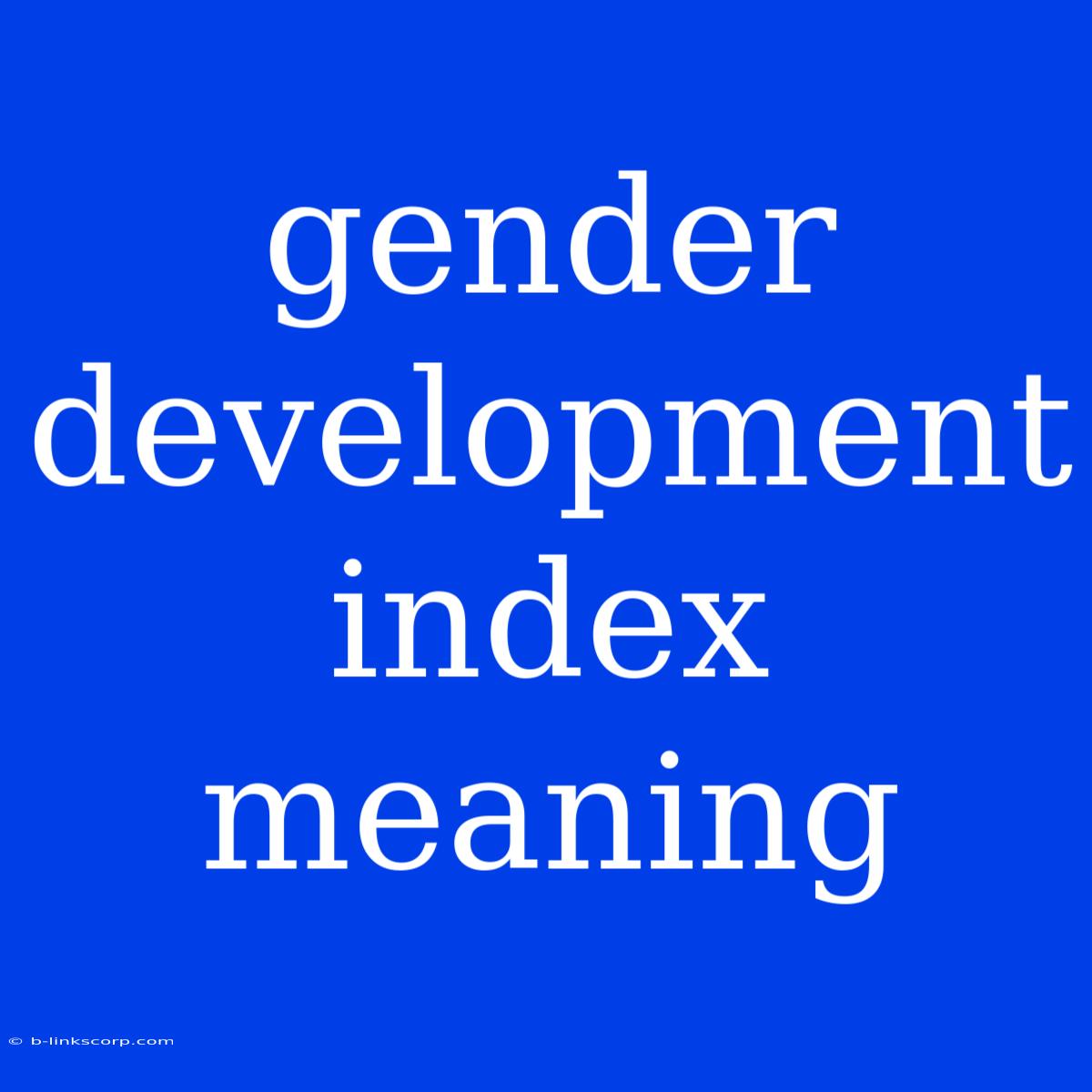Gender Development Index (GDI): A Measure of Gender Equality
The Gender Development Index (GDI) is a crucial metric used to assess the extent of gender equality within a particular country or region. It is a composite index that compares the achievements of women and men in three key areas: health, education, and income.
Understanding the Components of GDI
1. Health: Measured by life expectancy at birth, this component reflects the overall health and well-being of women and men in a society.
2. Education: This component considers both literacy rates and years of schooling. It assesses the level of educational attainment for both genders, indicating their access to and participation in education.
3. Income: This component is measured by gross national income (GNI) per capita. It reflects the economic opportunities available to women and men, highlighting any disparities in income levels and economic empowerment.
Interpreting the GDI Score
The GDI is presented as a ratio, with a value of 1.00 indicating complete gender equality. This means that women and men achieve the same outcomes in health, education, and income. A value below 1.00 signifies that women are disadvantaged relative to men.
The higher the GDI score, the greater the level of gender equality. Conversely, a lower GDI score points to greater disparities between men and women in terms of their access to resources and opportunities.
Importance of GDI
The GDI serves as a valuable tool for:
- Monitoring progress in achieving gender equality over time.
- Identifying areas where gender disparities are most pronounced.
- Developing targeted interventions to address specific challenges faced by women.
- Encouraging policy changes to promote greater equality and empowerment for women.
Limitations of GDI
Despite its importance, the GDI has some limitations:
- It only reflects aggregate data and may not capture the nuances of gender inequality within a country.
- It does not account for cultural and social factors that may influence gender roles and opportunities.
- It may underestimate the true extent of gender inequality by focusing primarily on economic and social indicators.
Conclusion
The GDI provides a valuable snapshot of gender equality in a particular context. While it has limitations, it remains an important tool for monitoring progress, identifying challenges, and developing targeted strategies to promote gender equality around the world.

